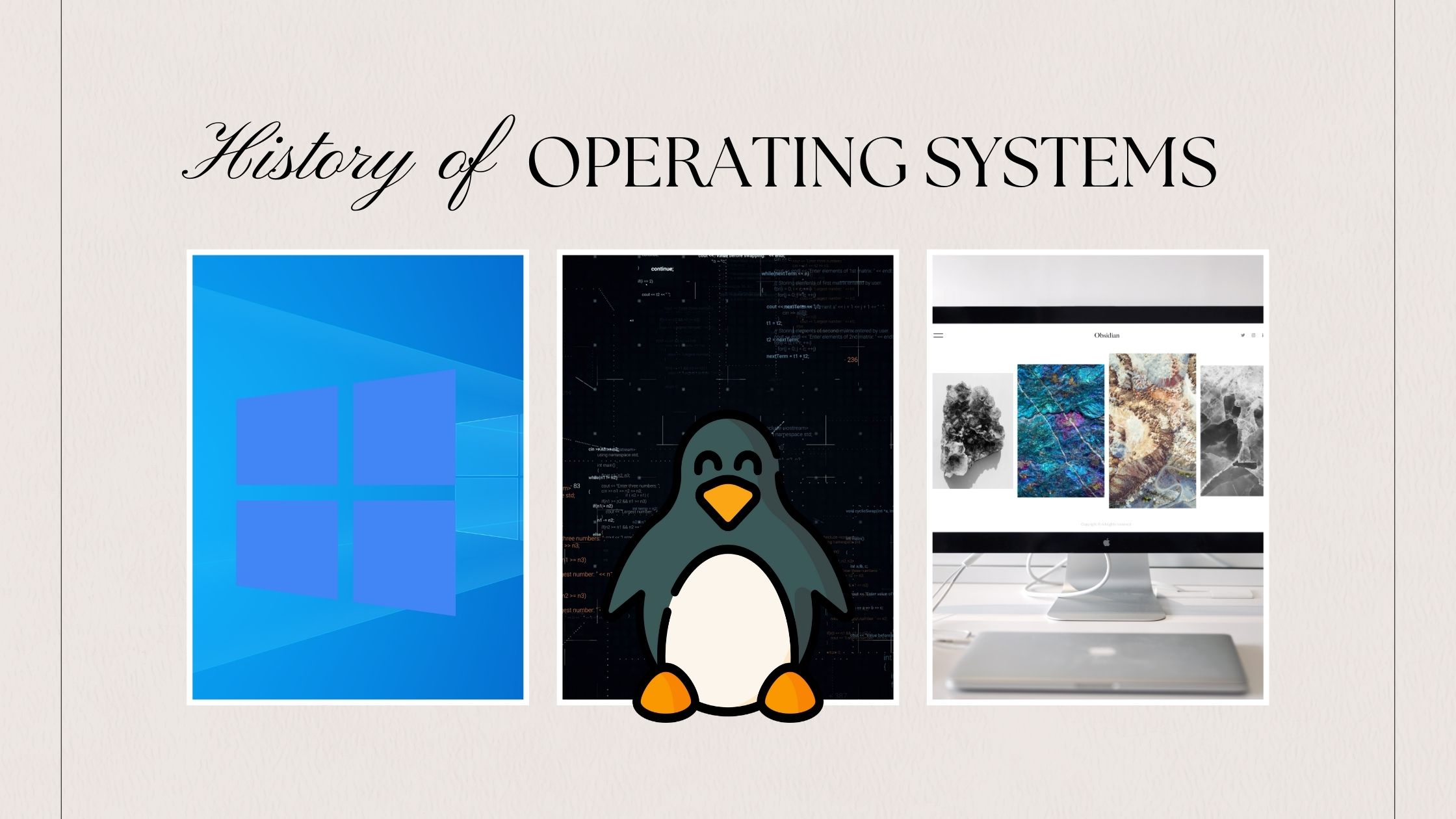Operating systems are the silent architects behind the digital revolution, orchestrating the intricate dance between hardware and software that powers our modern world. From the pioneering days of Unix to the latest release of Windows 11, the evolution of operating systems is a testament to human ingenuity and technological progress.
In this blog post, we embark on a journey through time, exploring the milestones, innovations, and key players that have shaped the landscape of computing as we know it.
History of Operating Systems:
Time line of Operating Systems:
- 1950s: Early operating systems for mainframe computers were developed, mostly by individual vendors or customers for specific machines.
- 1960s: IBM’s OS/360 introduced a single OS for a range of computers, and Control Data Corporation’s SCOPE operating system enabled batch processing.
- 1970s: Time-sharing operating systems became prominent, allowing multiple users to access a computer simultaneously.
- 1980s: The introduction of the graphical user interface (GUI) made computers more user-friendly. MS-DOS and Apple’s Macintosh OS gained popularity.
- 1990s: Networked operating systems facilitated communication and resource sharing between computers. Linux emerged as a major contender.
- 2000s onwards: Mobile operating systems for smartphones and tablets became widespread. Microsoft Windows, macOS, and various versions of Linux continue to dominate the desktop and server markets.
formore detailed information refer – Wikipedia
Unix: A Foundation for Modern Computing (1969)
Unix stands as a cornerstone in the history of operating systems, born out of the collaborative efforts of Ken Thompson, Dennis Ritchie, and others at Bell Labs in 1969. Renowned for its robustness, multitasking capabilities, and command-line interface, Unix laid the groundwork for the modern computing era. Its modular design and support for multiple users set the stage for future advancements in operating system development.
Windows: Pioneering Personal Computing (1985)

In 1985, Microsoft revolutionized personal computing with the release of Windows 1.0, marking the beginning of a new chapter in operating system history. Windows introduced users to a graphical user interface (GUI) paradigm, making computing more accessible and intuitive for the masses. Subsequent iterations of Windows, including Windows 95, XP, and the latest Windows 11, have continued to push the boundaries of innovation, offering enhanced security, performance, and user experience.
Apple: Blending Innovation with Elegance (1976)

Founded by Steve Wozniak and Steve Jobs in 1976, Apple Computers carved out its own niche in the computing industry with a focus on design excellence and user-centric innovation. From the handmade Apple 1 computers to the sleek macOS operating system, Apple has consistently pushed the envelope in terms of creativity and usability. The introduction of macOS, with its seamless integration of hardware and software, has solidified Apple’s reputation as a leader in the field of personal computing.
Beyond Windows 11: Exploring Diverse Operating Systems
While Windows and macOS dominate the desktop computing landscape, other operating systems have made significant contributions to the field. Linux, a Unix-like operating system, has gained popularity among enthusiasts and professionals alike for its open-source nature and robustness. Mobile operating systems like Android and iOS have transformed the way we interact with technology, ushering in an era of ubiquitous computing and mobile applications.
Functionality and Innovation: Driving Operating System Evolution
Throughout the evolution of operating systems, functionality has been a driving force behind innovation. From multitasking capabilities in Unix to graphical applications in Windows and app stores in macOS, iOS, and Android, each operating system has introduced new features and functionalities that have shaped the way we use technology. As we look to the future, the evolution of operating systems continues, driven by advances in artificial intelligence, cloud computing, and emerging technologies.
Conclusion:
As we reflect on the rich history of operating systems, we are reminded of the transformative power of technology to shape our world. From the humble beginnings of Unix to the cutting-edge innovations of Windows 11 and beyond, operating systems have played a pivotal role in driving progress and innovation in computing.
As we navigate the ever-changing landscape of technology, let us embrace the diversity and complexity of operating systems, knowing that the journey towards a more connected, efficient, and inclusive future is ongoing.
What’s your favorite operating system? Why? Comment Your Answer

1 thought on “History of Operating Systems: Evolution From Unix to the Modern Era”